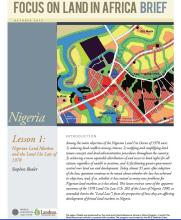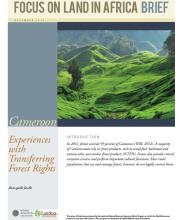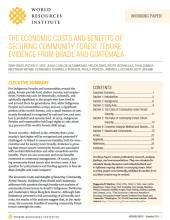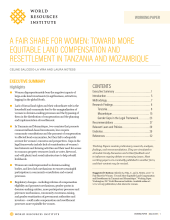/ library resources
Showing items 1 through 9 of 34.A large number of countries recognize the role of forests in carbon sequestration and committed in their NDCs to protect forests, reduce deforestation rates, and restore forestlands.
Indigenous and community lands, crucial for rural livelihoods, are typically held under informal customary arrangements.
Community land, crucial to rural livelihood around the world, is increasingly targeted by commercial interests. Its loss can lead to environmental degradation, increased rural poverty and land disputes that last for years.
Women disproportionately bear the negative impacts of large-scale land investments (in agribusiness, extractives, logging) in the global South.
This lesson brief explores the decentralization of wildlife user rights and their impact on loca
Among the main objectives of the Nigerian Land Use Decree of 1978 were:
1) reducing land conflicts among citizens; 2) unifying and simplifying land
tenure concepts and land administration procedures throughout the country;
In 2011, forests covered 59 percent of Cameroon (WRI, 2012). A majority of Cameroonians rely on forest products, such as wood fuel, bushmeat and various other non-timber forest products (NTFPs). Forests also provide critical ecosystem services and perform important cultural functions.
Evidence is growing that tenure-secure community forests are associated with avoided deforestation and other ecosystem-service benefits. There are also economic and social benefits connected to communal management.
Tanzania and Mozambique — countries of vast mountain ranges and open stretches of plateaus — now face a growing land problem.
Pagination
Land Library Search
Through our robust search engine, you can search for any item of the over 73,000 highly curated resources in the Land Library.
If you would like to find an overview of what is possible, feel free to peruse the Search Guide.






